Visit The Swamps Of Louisiana
Just a short drive from New Orleans are a number of picturesque Louisiana swamps and a number of tours that you can take to explore the endless waterways and breathtaking nature. You'll explore undeveloped reaches of Louisiana decorated with Spanish moss and lined with gnarled cypress trees. Along the way, you'll be sure to encounter swamp wildlife like alligators, hundreds of different species of birds and many other animals. You'll learn about the pirates that once hid in these wild and pristine river swamps and hear legends of Bigfoot. You may be a bit nervous at first, but after your first boat tour, you'll want to go back again and again to keep exploring.
Learn more about the swamps and the wildlife that inhabit them.
Swamp Tours Near New Orleans
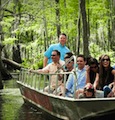
Cajun Encounters Swamp Tours
Cajun Encounters uses smaller boats accommodating up to 24 passengers to allow for a quieter and more personal experience. With vast knowledge of the swamp and its wildlife, Cajun Encounters will take you through the back bayous for a real Cajun experience.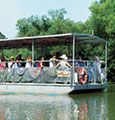
Gray Line Swamp Tours
Discover the beauty of the bayou with a tour on a custom-built swamp boat. Gray Line New Orleans, the world's leader in sightseeing, has been showcasing New Orleans to visitors from around the world since 1924. Hop on, and enjoy touring New Orleans' many beautiful and interesting attractions. (Coupons available at NewOrleansCoupons.com.)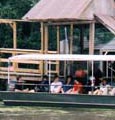
Honey Island Swamp Tours, Inc.
Enjoy a trip into one of the least-altered river swamps in the country. Nearly 70,000 acres of the Honey Island Swamp are a permanently protected wildlife area, surrounding you with the beauty of nature and the area's local creatures. Honey Island's guides truly love the swamps, have a great sense of humor, and can answer all of your questions. Check outHoneyIslandSwamp.com for more information and pictures.
Swamp Tours by Isabelle
Driving out to Cajun Country, we go through wild cypress swamps, over the Mississippi River on an impressive suspended bridge, and along vast sugarcane fields, as our guide tells the unique story of the Cajun people's odyssey.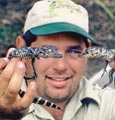
Jean Lafitte Swamp Tours
Journey with us by boat, Cajun-style, for a 1-hour-45-minute tour through the heart of Southern Louisiana's swamplands. Experience real-life adventure for the whole family from the comfort of our swamp boats. Loop back into our privately owned, meandering bayous and take a look into the past. View moss-draped cypress trees, fascinating plant life and the creatures who make their homes here.
Pearl River Eco Tours
Among majestic cypress trees and winding bayous lies South Louisiana's crowned jewel; the Honey Island Swamp. Journey through this untouched wilderness of pristine beauty and unrivaled charm. Experience the magnificence of the wildlife in their natural surroundings.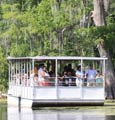
Cajun Pride Tours
Cajun Pride Tours offers tours for those with just a few hours to spare, and for those who have plenty of time reserved for sightseeing. Enjoy a city tour within just 3 hours, a swamp or single plantation tour that requires only 4 hours of your day, or relax on a 6-10 hour combination tour..jpg)
Machu Picchu Swamp Tours
Venture deep into the Louisiana wetlands as you travel on an airboat with an experienced tour guide. You’ll get up close and personal with swamp wildlife and including with alligators, egrets, mink, nutria, and snakes dominate this marshland.
About the Swamps
New Orleans is a city surrounded by swampland, virtually making it a low-lying island. In fact, it is second only to Death Valley as the lowest area in the country. The swamps of New Orleans are among its most beautiful attractions. The bayou is often considered a dark, foreboding territory which offers some of the wildest nature to be found on earth. Although considered mysterious by many, the swamps should be appreciated for their natural beauty and amazing plant and animal life. The list of wildlife in a cypress swamp is long (it is not uncommon to see alligators), and it is said that a list of the different shrubs and vines would fill a telephone book!
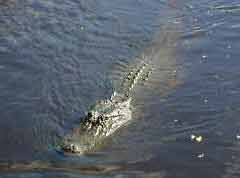 Swamps were long considered forbidden lands by some, and in the last several hundred years, many have been drained for their tremendous agricultural potential and for the value of the cypress wood. They were also drained by settlers who wanted to convert them into land for homes, and by lumber barons who exploited the area for its timber resources (cypress has always been in great demand because of its rot-resistant qualities).
Swamps were long considered forbidden lands by some, and in the last several hundred years, many have been drained for their tremendous agricultural potential and for the value of the cypress wood. They were also drained by settlers who wanted to convert them into land for homes, and by lumber barons who exploited the area for its timber resources (cypress has always been in great demand because of its rot-resistant qualities).
As settlement spread, fewer places were left to hunt, fish, and enjoy nature. Eventually, swamps were recognized as a retreat for wildlife and a place where Louisianians could find solitude and enjoy a variety of recreational activities.
Our area swamps have also given rise to several legends. It is said that Jean Lafitte, the noted pirate and hero of the Battle of New Orleans, made a living off pirate booty worth millions buried in the marshes. The most famous stories of all swamp lore are the reported sightings of the legendary Bigfoot. Sightings of the shy giant have been reported as far back as the earliest recorded contact with native Indians.
Swamp Life
Have you ever visited the swamp by boat or hiked along its walking trails? Have you ever seen Louisiana's egrets, herons, pelicans and alligators in their natural habitat?
Inhabiting the swamps are animals, reptiles, amphibians, insects, and birds of all types. The most worrisome are, of course, snakes and alligators. While there are many non-poisonous snakes (there are only six poisonous varieties in Louisiana), one must watch out for water moccasins (cottonmouths), which may be underfoot or lurking in the trees above. Their bites can be deadly.
 Alligators should be respected, too. Even small gators (from five to six feet long) can cause severe injury. They can grow to be as large as 14 to 18 feet in length. Alligators alternate between lying in the water and on the banks as a means of regulating their body temperature, and are most active during the warmer months. Since they often lie perfectly still, it is easy to mistake one for a log, and then it may be too late to escape!
Alligators should be respected, too. Even small gators (from five to six feet long) can cause severe injury. They can grow to be as large as 14 to 18 feet in length. Alligators alternate between lying in the water and on the banks as a means of regulating their body temperature, and are most active during the warmer months. Since they often lie perfectly still, it is easy to mistake one for a log, and then it may be too late to escape!
Several varieties of turtles can be seen on Louisiana swamp logs and banks, including snapping turtles. Birds abound, including snowy egrets, blue herons, pelicans, and since Louisiana is along the migratory flyway, you will often see ducks and geese. Nutrias (originally imported from South America) have found our swamps to be to their liking, also. Let's not forget our famous insects: mosquitoes and spiders.
There are several state and national parks and wildlife refuges surrounding New Orleans that provide the public with access and swamp tours. Bayou Sauvage Wildlife Refuge to the east of New Orleans and Jean Lafitte National Historical Park to the south of New Orleans, along the route to Barataria, are two that are readily accessible.
No comments:
Post a Comment